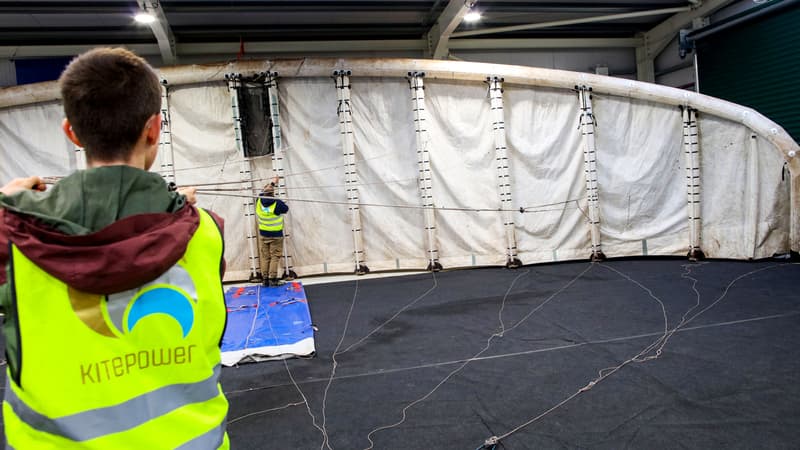In the sinuous western Ireland coast, researchers fly immense meats, however, they have only fun to produce renewable electricity. “We use a kite to capture the wind, and a generator in its base captures energy,” said Padraic Doherty, of the Kitepower of the Dutch company at the origin of the project.
A 60 -square -meter model of a hangar has just been launched on the Bangor Erris test site, a small city in May County, opened in September 2023. A equipment transports the machine to the generator, before connecting them using a cable. The kite, with a strings and pulley system, flies in the air and acts as a “I-Yo or a fishing reel,” says Padraic Doherty.
400 meters above sea level
It can reach an altitude of 400 meters, before descending to 190 meters. A repeated movement that allows you to reach almost 30 kW of power. The energy produced is stored in batteries, similar to those used for photovoltaic panels. According to their designers, only one kite to recharge a 336 kilowatt battery.
The temperate coasts of Ireland, whose government seeks to reduce its dependence on oil and gas, are an ideal patio to test this new technology, called “wind energy in the air”. “We are witnessing a revolution in wind energy,” says Andrei Luca, while his team ensures the good trajectory of the kite using piloting software.
According to Padraic Doherty, one of the main advantages of the system is its rapid start -up. “We can install it in 24 hours and take it anywhere,” he said, already a difference from the “traditional wind turbines”, does not require “money and energy bases.” The kite is “much less invasive at the landscape level, produces clean energy and does not depend on a fuel supply chain to function,” summarizes its partner Andrei Luca.
Isolated environments
A demonstration of its effectiveness took place in January, during the Eowyn storm, which caused large power cuts throughout the country: the kite “provided uninterrupted electricity before, during and after the storm,” said Andrei Luca.
Wind turbines have long presented themselves as a sector of the future in Ireland. But the large large -scale display of turbines, in land and sea, faces administrative delays and capacity limits of the electricity grid. The government points to 20 wind gigawatts on the high seas by 2040, and at least 37 by 2050. In 2024, wind farms provided approximately one third of the country’s electricity, according to Wind Energy Ireland (Wei), the main lobby in the sector.
For Mahdi’s salaries, a Cork University College researcher, in the south of the country, the capacity of the kite to capture winds to the altitude with little infrastructure “makes them particularly suitable for isolated environments, in the sea or mobile uses.” However, he acknowledges that Kitepower will have to assume challenges in terms of “system regulations, security and reliability.”
But this technology, according to him, could be imposed where “the availability of land, costs or logistics limitations slow down the development of traditional wind turbines.”
Source: BFM TV


